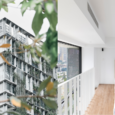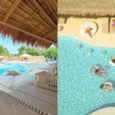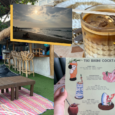National Museum: An Inside Look into the Recently Renovated Museum
In our old beat-up family pick-up truck, my mother and I made our way from our home in quiet Marikina to the overcrowded, noisy, and dirty streets of Manila. Located in what once was the old legislative building along Taft Avenue, the National Museum had recently received a complete internal facelift with newly painted walls and reorganized exhibits. The place is now reminiscent of a European tourist attraction and now houses some of the rarest and most beautiful pieces of art in the country, such as Juan Luna’s Spoliarium, as well as a number of Jose Rizal’s sculptures and an entire collection of Fernando Amorsolo’s portraits, sketches, and notes.
After a short detour through Binondo, the old beat-up pick-up finally made its way through the driveway of the large yellow building. Newly cleaned and painted, the large imposing structure stood tall and proud amidst the hustle and bustle of busy Manila.
Upon entering the National Museum, one is greeted with double doors leading to the first gallery for viewing: Luna at Hidalgo. Beyond the sign, were two of the largest paintings I had ever seen: a Hidalgo creation, which I embarrassingly did not know the name of and Luna’s famous Spoliarium. I later found out that the Hidalgo work displayed in the Hall of the Masters is called Virgenes Cristianas Expuestas al Populacho (Christian Virgins Presented to the Populace).
The entrance fee was fair at Php 150 for an adult and Php 50 for a student upon presentation of a valid ID, but the unfortunate reality is that there weren’t a lot of people there and maybe this can be attributed to my going on a weekday. At most, there were 50 people there – staff included. In the fast-paced lifestyle of this century, not a lot of people seem to have enough time to go on a day trip to a museum anymore unless it is a necessity.
The second gallery I visited was the one dedicated to Rizal. Unquestionably a renaissance man, the gallery dedicated to the works of our national hero was small in size, but held some of the most remarkable pieces of history in the Philippines. Sculptures and sketches lay in glass cases for the world to see. Such was an added glimpse into the world of the writer, the artist, the hero. Apart from his original works, other sculptures and paintings dedicated to Rizal were also available for viewing.
In a gallery on the second floor, there hung a painting of Juan Luna that I had been familiar with since my early years in high school. The painting was entitled The Parisian Life and depicted a Parisian woman in all her splendor sitting in what would appear to be a café. The painting was valued at Php 2.5 Million. It was small in size and reminded me of the Mona Lisa—small but expensive.
At some point, I stumbled upon a gallery containing paintings of the Basi Revolt. This had to be the best gallery in the place to be completely honest. Painted by one Esteban Villanueva, the series of 14 paintings depicted the revolt of the Ilocanos against the Spaniards during the Spanish occupation of the Philippines. According to the information displayed in the gallery, the collection was found in Villanueva’s familial home. It is said that these paintings are the only ones which depict this moment in Philippine history. It is also said that these are Villanueva’s only works or, at least, they are the only works that have been discovered thus far.
My next favourite room was the gallery dedicated to the art of the Japanese occupation of the Philippines. It was here that I saw some of the most horrific and most vivid portraits of comfort women, mass murders, and faces of once-living people. One painting which truly pierced my memory was entitled Doomed Family. In the painting, a woman was shown lying dead on the ground with her breast hanging out of her clothes while a man on his knees who I could only assume is either a husband or a father sat beside her with his wrists bound. The painting right next to it was that of a Japanese soldier standing amongst black and blue comfort women. All-in-all, galleries such as this—more politically and historically relevant—leave a certain kind of mark in a person and has the ability to ingrain the images in one’s mind.
That was the last of the exhibits that I went through. Truly, the renovations done to the National Museum are remarkable and deserve praise. The galleries, at least those that were open for viewing, were organized and structured in a simple and tasteful manner. And although it’s still a work in progress, it’s already become a must see place in Manila. Kudos to those responsible.
I only hope that more people discover this beauty in the dirty and busy streets of Taft Avenue.
Did you know that admission is free on Sundays? Read more about it here: The National Museum of the Philippines: Manila’s Very Own Paris for P0.00
Manila also houses a number of other museums open to the public. Find out more about it here: National Museums of the Philippines: Ayala Museum
The National Museum
P. Burgos Drive, Rizal Park, Manila
https://www.nationalmuseum.gov.ph
(+632) 527-12-09








